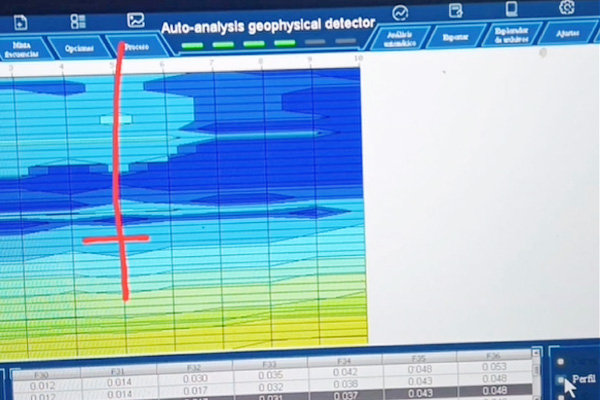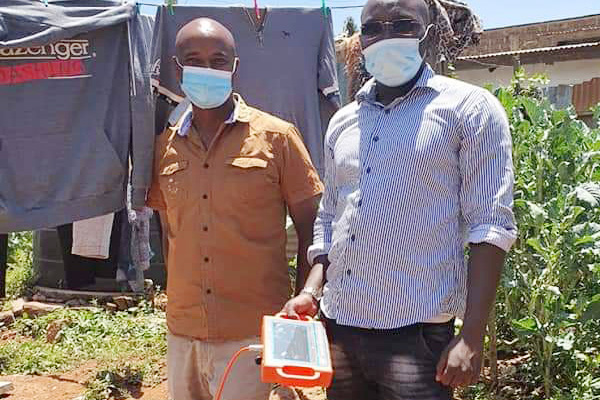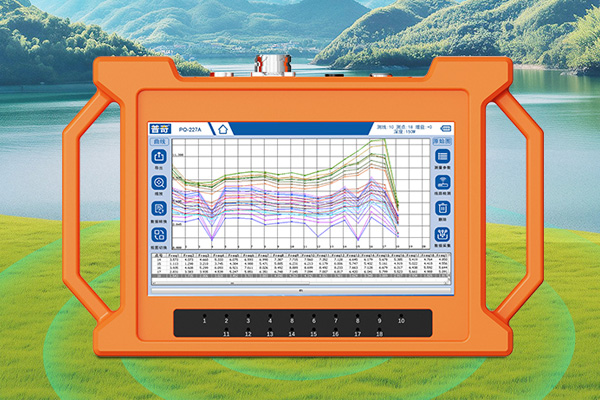Cable&Pipe Locator is a high-tech product widely used in fields such as water companies, gas companies, railway communication, municipal construction, industrial and mining, and infrastructure units for the renovation, maintenance, and survey of underground pipelines. Its core working principle is based on the reflection principle and electromagnetic induction principle of electromagnetic waves during transmission, combined with digital filtering, wireless reception, and software control technology. This article will provide a detailed introduction to the working principle of Cable&Pipe Locator and its operational methods in practical applications.

1、 Working principle
The working principle of Cable&Pipe Locator is mainly divided into two parts: electromagnetic induction and electromagnetic wave transmission.
1. Principle of Electromagnetic Induction
The transmitter of Cable&Pipe Locator generates electromagnetic waves and transmits signals to the metal pipelines being detected underground through different transmission connection methods, such as direct connection, induction method, and clamp method. When a metal pipeline senses electromagnetic waves, it will generate induced currents on its surface. These induced currents propagate along the metal pipeline towards a distance and radiate electromagnetic waves to the ground through the pipeline during the propagation process. The receiver on the ground can detect the electromagnetic wave signals radiated from underground pipelines, and through the changes in the strength of the received signals, it can determine the position, depth, and direction of underground metal pipelines.
2. Principle of Electromagnetic Wave Transmission
Cable&Pipe Locator also utilizes the reflection principle of electromagnetic waves during transmission for detection. When electromagnetic waves encounter underground pipelines or other obstacles, they will be reflected, and the reflected waves will be received and analyzed by the receiver to determine the position and direction of the pipeline.
2、 Operation method
Cable&Pipe Locator generally consists of two main parts: transmitter and receiver, and is equipped with various accessories such as clamps, A-frames, headphones, etc., to improve the accuracy and convenience of detection.
1. Transmitter
The transmitter is used to apply signals of specific frequencies to the target pipeline. Its working principle is to transmit signals to underground pipelines through direct connection, induction, or clamp methods. The transmitter has multiple signal output modes, such as direct connection output, clamp coupling, and radiation induction, to meet different detection requirements.
2. Receiver
The receiver is equipped with an induction coil, which is used to receive electromagnetic wave signals radiated from underground pipelines. The receiver generally has multiple receiving modes, such as peak mode (maximum value), valley mode (minimum value), wide peak mode, as well as peak arrow mode and compass guidance mode. These modes can more intuitively display the location and direction of pipelines.
3、 Detection steps
1. select detection frequency and mode
select the appropriate detection frequency and reception mode according to the detection requirements. Different frequencies and modes have different detection effects on different types of underground pipelines.
2. Transmitting signals
Use a transmitter to apply signals to the target pipeline. Signals can be transmitted to underground pipelines through direct connection, induction, or clamp methods.
3. Receive signals
Use a receiver to detect on the ground and receive electromagnetic wave signals radiated from underground pipelines. Determine the location, depth, and direction of underground pipelines based on changes in signal strength received.
4. Data analysis
Based on the received signal data, combined with the display and prompt functions of Cable&Pipe Locator, accurately analyze the location and direction of underground pipelines.
4、 Application examples
Cable&Pipe Locator can quickly and accurately detect the location, direction, depth of underground water pipelines, metal pipelines, cables, and the location and size of damage points on the anti-corrosion coating of steel pipelines without damaging the ground cover soil. For example, in municipal construction, Cable&Pipe Locator can be used to conduct a survey of underground pipelines to determine their location and direction, providing accurate basis for construction. In water companies, Cable&Pipe Locator can be used to maintain and inspect water pipelines to ensure water supply safety.
5、 Precautions
1. Choose the appropriate detection frequency and distance
When using Cable&Pipe Locator, it is necessary to choose the appropriate detection frequency and distance based on the detection environment and pipeline type to improve the accuracy of the detection results.
2. Avoid interference
In complex environments such as cities, there are numerous underground pipelines that interfere with each other, which may have a certain impact on the detection results. Therefore, when using Cable&Pipe Locator, attention should be paid to avoiding interference, such as selecting appropriate detection time and location, and using instruments with strong anti-interference ability.
3. Regular maintenance
Cable&Pipe Locator requires regular maintenance and upkeep to ensure its proper functioning. For example, it is necessary to check the battery level and whether the instrument functions properly.
Cable&Pipe Locator is an efficient and accurate tool for underground pipeline detection. Its working principle is based on the principles of electromagnetic induction and electromagnetic wave transmission. Through the cooperation of the transmitter and receiver, it can achieve rapid detection and precise positioning of underground pipelines. In practical applications, it is important to choose the appropriate detection frequency and distance, avoid interference, and regularly maintain the instrument to ensure its normal operation.








